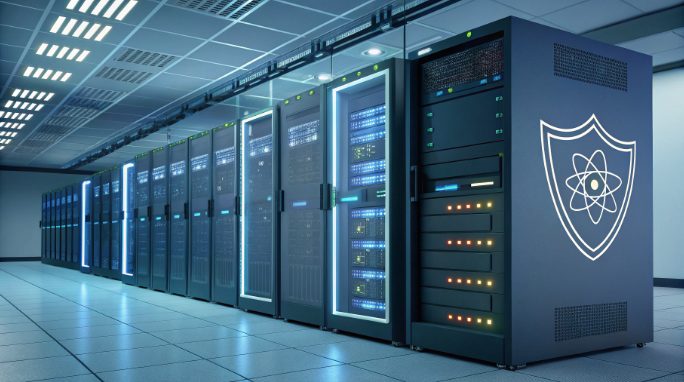Factors Affecting the Hosting Price of Anti-DDoS Servers

In the ever-evolving landscape of server hosting, understanding the cost dynamics of high-protection servers has become crucial for tech professionals and businesses alike. Hong Kong’s strategic position as a major data hub makes high-protection server hosting a critical consideration for organizations seeking robust digital infrastructure and enhanced security measures. With cyber threats becoming increasingly sophisticated, the demand for premium protection services has surged, leading to a complex pricing ecosystem that reflects both technical capabilities and market dynamics.
DDoS Protection Capabilities
The primary factor driving high-protection server costs is the sophistication of DDoS mitigation systems. Enterprise-grade protection typically offers mitigation capacity ranging from 100Gbps to 1Tbps. Advanced filtering algorithms and real-time traffic analysis mechanisms contribute significantly to the overall pricing structure. The implementation of AI-powered threat detection systems and customized protection rules further influences the cost matrix. Modern protection systems incorporate machine learning algorithms that can identify and mitigate zero-day attacks, requiring substantial computational resources and specialized expertise. The cost of maintaining dedicated scrubbing centers and deploying advanced traffic filtering mechanisms adds another layer to the pricing structure.
Hardware Configuration Specifications
Server hardware specifications play a pivotal role in determining hosting costs. Modern servers equipped with latest-gen Intel Xeon processors, DDR4 ECC memory modules, and NVMe storage arrays command premium pricing. The correlation between computing power and cost is particularly evident in high-performance configurations designed for resource-intensive applications. Enterprise-grade SSDs with high IOPS capabilities, redundant power supplies, and specialized network interface cards contribute to the hardware cost component. The integration of hardware security modules (HSM) and custom FPGA accelerators for specific security functions further impacts the pricing structure. Regular hardware updates and component replacements are factored into the long-term cost calculations.
Bandwidth and Network Architecture
Network infrastructure quality significantly impacts pricing models. Premium BGP networks with optimized routing paths, redundant connections, and low latency characteristics typically incur higher costs. Bandwidth packages ranging from 100Mbps to 10Gbps are priced according to commit rates and burst capabilities. The implementation of smart routing algorithms and traffic optimization protocols adds another layer to the cost structure. Multi-carrier network setups with automatic failover mechanisms and advanced QoS implementations require sophisticated network management systems. The cost of maintaining multiple upstream providers and implementing advanced traffic engineering solutions contributes to the overall pricing framework.
Data Center Infrastructure
Hong Kong’s Tier III and Tier IV data centers, equipped with N+1 redundancy systems, contribute to the hosting cost framework. Facilities with advanced power distribution units, precision cooling systems, and sophisticated access control mechanisms typically command higher prices. The geographical positioning and interconnectivity options of these facilities also influence the pricing structure. Modern data centers incorporate green energy solutions and advanced environmental monitoring systems, which affect operational costs. The implementation of biometric security systems, CCTV surveillance, and 24/7 on-site security personnel adds to the facility maintenance expenses.
Technical Support and Service Level Agreements
Enterprise-grade support systems with 24/7 monitoring capabilities and rapid response protocols affect service pricing. Advanced troubleshooting tools, automated system health checks, and proactive maintenance schedules are factored into the cost calculations. SLAs guaranteeing 99.99% uptime with comprehensive compensation policies typically reflect in premium pricing tiers. The availability of dedicated technical account managers, custom solution architects, and specialized security experts influences support costs. Regular training programs and certification requirements for support staff contribute to the operational expenses.
Resource Scaling and Deployment Options
The flexibility of resource allocation and scaling capabilities impacts hosting costs. Dynamic resource provisioning systems, automated backup mechanisms, and disaster recovery protocols contribute to the pricing framework. Load balancing configurations and traffic distribution algorithms are essential components of the cost structure. Advanced orchestration platforms enabling rapid deployment and configuration changes require sophisticated management systems. The implementation of container management platforms and microservices architecture support adds complexity to the pricing model.
Security Implementations and Compliance
Advanced security protocols including hardware firewalls, intrusion detection systems, and SSL acceleration modules affect hosting prices. Compliance with international standards such as ISO 27001 and PCI DSS requires sophisticated security implementations that influence the cost matrix. Regular security audits and penetration testing protocols add to the overall pricing structure. The implementation of zero-trust security frameworks and advanced access control systems requires significant investment in security infrastructure. Continuous security monitoring and incident response capabilities contribute to the operational costs.
Cost Optimization Strategies
Understanding resource utilization patterns and implementing efficient monitoring systems can optimize hosting costs. Automated scaling mechanisms based on traffic patterns and workload distribution can help achieve cost efficiency. Regular performance analytics and resource allocation adjustments contribute to maintaining optimal price-performance ratios. The implementation of predictive maintenance systems and capacity planning tools helps in managing long-term costs effectively. Strategic partnerships with technology providers and bulk resource commitments can lead to significant cost savings.
Future-Proofing Considerations
In the rapidly evolving server hosting landscape, considering future expansion capabilities and technology upgrades is crucial. The integration of emerging technologies like edge computing support and AI-powered resource management systems influences long-term hosting costs. Investing in scalable infrastructure with upgrade paths helps manage future expenses effectively. The adoption of quantum-safe encryption systems and advanced authentication mechanisms requires planning for future security implementations. Regular technology refresh cycles and infrastructure modernization programs need to be factored into long-term cost projections.
The complex interplay of these factors determines the final pricing of high-protection server hosting solutions in Hong Kong. Understanding these elements enables tech professionals to make informed decisions aligned with their security requirements and budget constraints. As cyber threats continue to evolve, the value proposition of robust server protection remains a critical consideration in the hosting ecosystem. The investment in high-protection hosting infrastructure represents a strategic decision that balances security requirements with operational efficiency and cost effectiveness.

